In the early days of the ironclad, a vast array of different configurations were tried, as naval architects tried to work out how best to send heavy guns and armor to sea. One particularly notable issue was how best to fit turrets aboard ships that still had to carry masts and sails, and the process of working this out led to one of the great tragedies of the age.
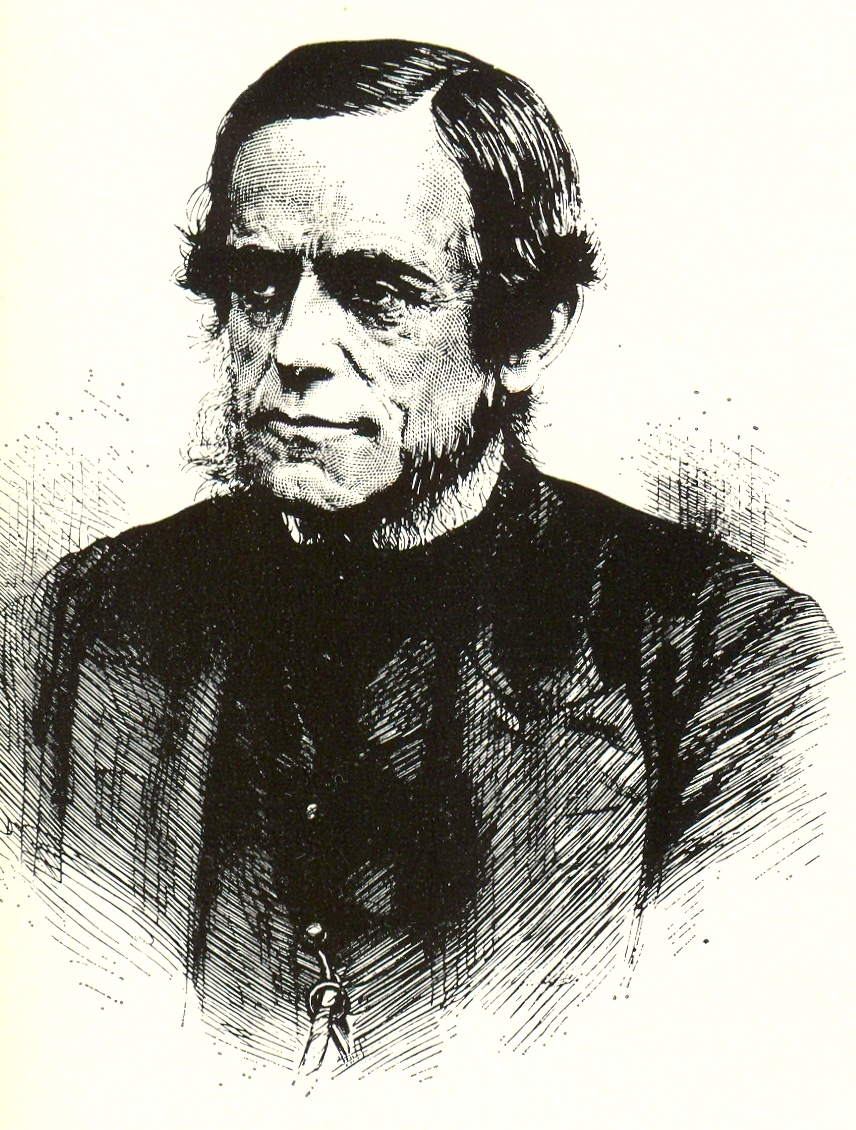
Cowper Phipps Coles
The instigator of all this was a British naval officer by the name of Cowper Phipps Coles. Coles had served in the Black Sea during the Crimean War, and in 1859 he patented a design for a turret, a rotating armored gunhouse supported on rollers on the deck.1 The first turret of Coles design2 was installed on the armored battery Trusty. Tests with it were quite successful, and the Admiralty quickly ordered a pair of mastless coastal defense ship fitted with turrets, the first major British warships not powered by sail. One was an iron-hulled newbuild, HMS Prince Albert, named for one of Coles' major political backers, while the other was converted from the wooden three-decker Royal Sovereign. Both proved quite successful during trials, but the the inefficient steam engines of the day limited them to short-range operations, and the second line of warships.
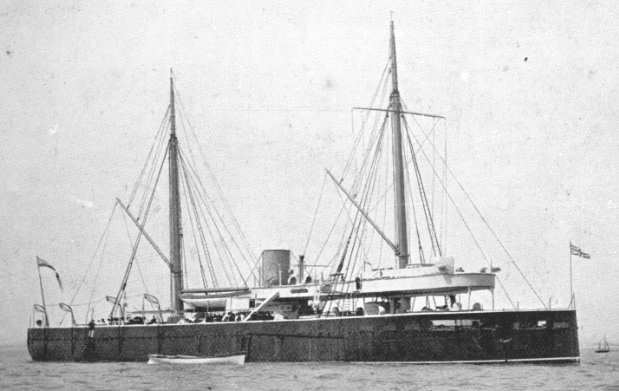
Prince Albert
Obviously, there was interest in the possibility of fitting a sailing ship with turrets, but this ran into a serious problem. A turret required a clear field of fire, while operating sails required all sorts of lines going down to the deck. Coles, who was mechanically gifted but had a limited grasp of naval architecture, quickly began to push for seagoing turret ships, endorsing a completely impractical 10-turret design in 1859 that caused considerable annoyance to Edward Reed, the Admiralty's Chief Constructor. Unfortunately for Reed, Coles proved to be quite skilled at getting public opinion on his side, and he began to rally political pressure for a seagoing turret ship even before Prince Albert and Royal Sovereign had been completed, casting Reed, an advocate of the central battery, in the press as a hidebound reactionary who was unwilling to adopt his ideas. The Controller of the Navy, Admiral Robert Spencer Robinson, attempted to work with Coles to develop a seagoing turret ship design, but he quickly grew exasperated by Coles' behavior, such as criticizing the Admiralty for rejecting a design that he hadn't actually sent in yet. However, Coles' over-the-top claims did attract public support, particularly from the Liberals, who used it as a weapon against the Admiralty both in the press and in Parliament.
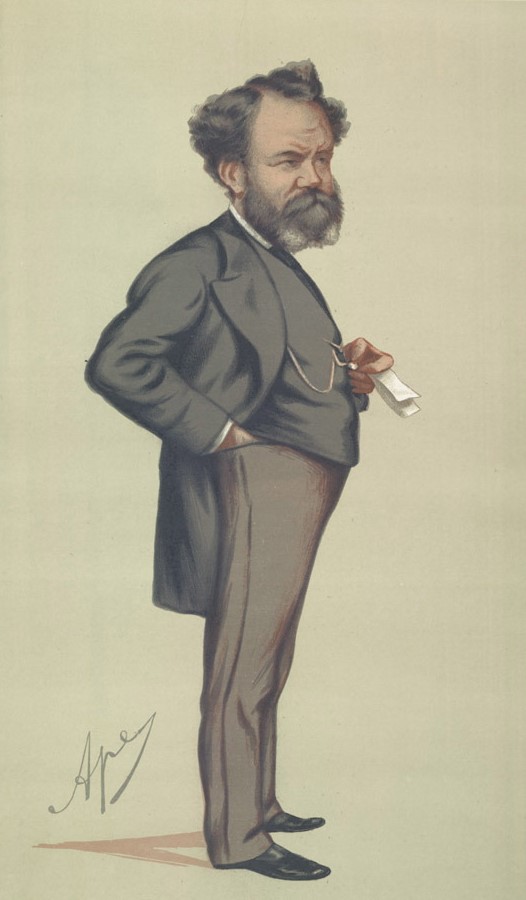
A caricature of Edward Reed
Eventually, the tests ships were ready, and trials on Royal Sovereign proved that the turrets would work well at sea. As such, the Admiralty asked Coles for a design, even agreeing to loan him a naval architect for the purpose of producing it. Coles proved difficult during the process, continuing to accuse Spencer Robinson and Reed of obstruction, but his plans were finally ready in early 1865. They showed a ship smaller than any ironclad yet built, with a single turret carrying two 12" guns and a freeboard of only 10', which meant that there would be water on deck at 13 kts. Reed was not complementary, and to quell the growing political storm, the government appointed a committee to look it over and figure out the best arrangement for a masted turret ship. Coles was quite ill and declined to participate, beyond his demand to nominate half the members, but Reed, Spencer Robinson, and a number of other experts in ship design and gunnery gave testimony. The committee eventually concluded that turrets were an effective way to take guns to sea, but that Coles' design had numerous problems.
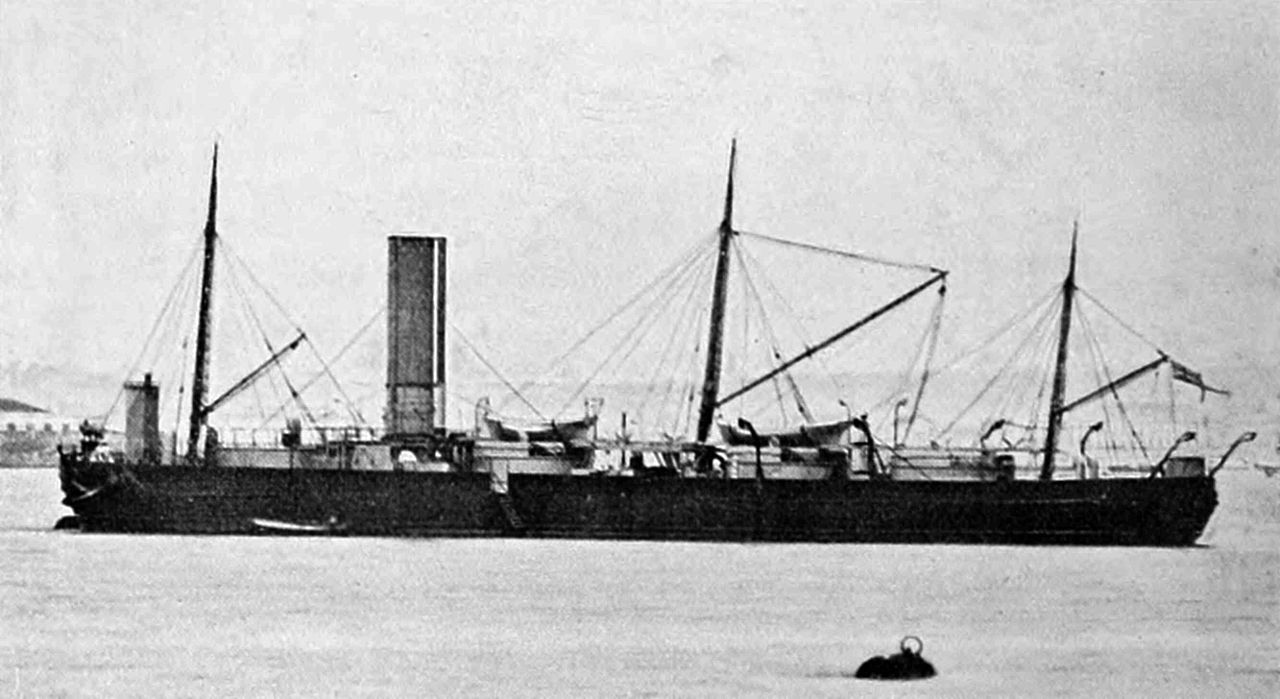
Royal Sovereign
Instead, they turned to Reed, who produced a ship with 14' freeboard and two turrets amidships with a pair of 12" guns each. A flying deck above the turrets provided space to work the sails, and when the ship cleared for action, the topmasts and yards would be lowered, reducing the number of shrouds required and improving fields of fire for the turrets. To keep the main deck dry at speed, Reed provided a forecastle and a poop, compensating for the reduced arcs of the turrets with two 9" guns forward and one aft. Coles, who had been sent the plans, was quick to attack the new ship. He claimed that it was excessively top-heavy, and that the forecastle and poop were unnecessary, preventing the use of ahead fire that was one of the great advantages of the turret. The Admiralty replied that the features he objected to were present at their request, and ignored him, laying down the ship, named Monarch, in 1866.
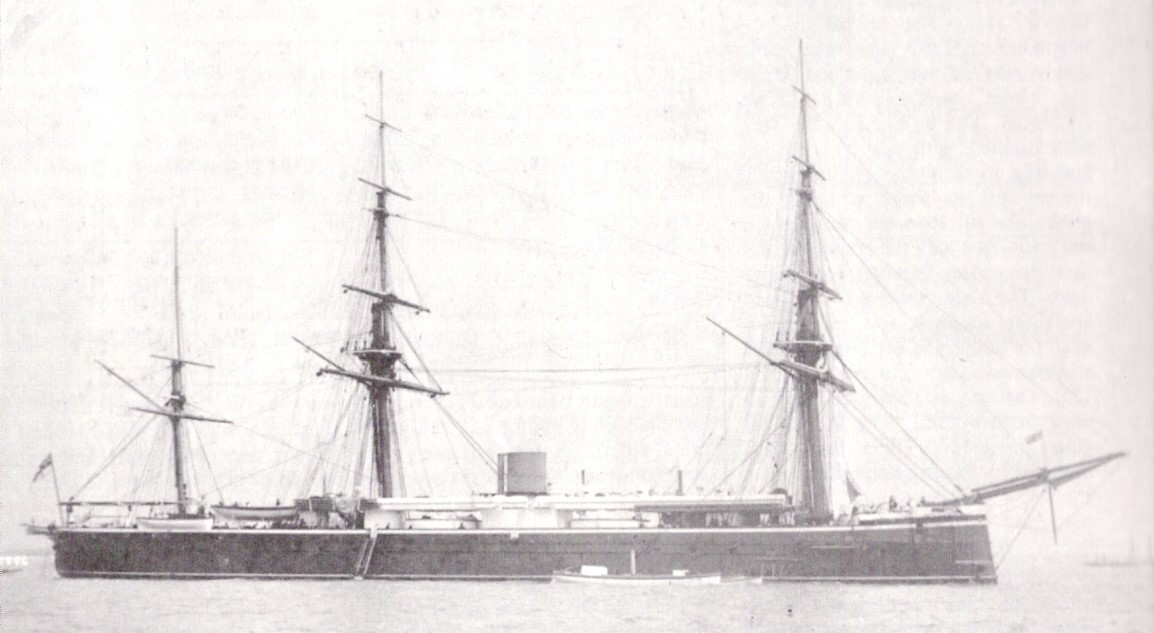
Monarch
To silence Coles and his Allies, the Admiralty offered him a deal. He was given a list of approved shipbuilders, and offered the opportunity to develop his own design for a two-turret ship with one of them, at the Admiralty's expense. If it was accepted, it would be included in the next estimates. Coles chose Laird Brothers, and produced a design by July 1866. It was considerably smaller than Monarch, about 7,000 tons to Monarch's 8,300, the major savings coming from the fact that the turrets were only 8' above the waterline, with a complete deck overhead. Laird had convinced Coles that a forecastle and poop were necessary, and the result looked rather like a conventional ship with a large section cut out for the turrets to go in. The tripod masts were significantly less likely to interfere with turret arcs than previous methods of rigging, but they were new and untested. Reed evaluated the plans, and commented that it was "a well considered and well contrived design... if we take it for granted that the deck is high enough".3 Unfortunately, this wasn't enough to dissuade the First Lord of the Admiralty from placing an order for the ship, now named Captain. The work was to be the responsibility of Laird and Coles, with the Admiralty providing some supervision, although the exact division of responsibility was never made clear, particularly as Coles was sick and unable to adequately supervise the work. Reed instructed his staff to mark all drawings related to Captain "No objection is seen" instead of the traditional "Approved", and warned Laird that he thought the center of gravity would be higher than they had assumed, and the weights involved greater. Laird claimed to have looked into the matter, but in fact did only a perfunctory check before construction began. Even this wasn't enough to placate Coles' supporters, who came very close to pushing through the construction of a fleet of turret ships before either Monarch or Captain was completed.
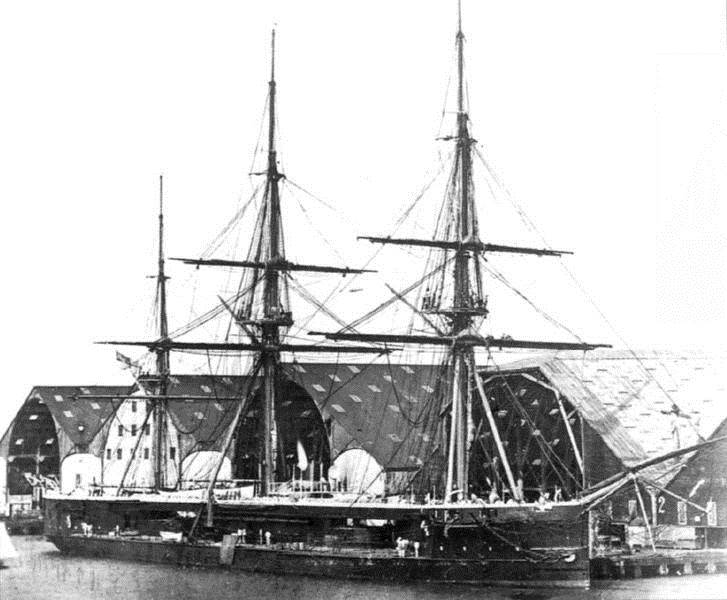
Captain
The final result validated Reed's fears. Captain was 735 tons overweight when she completed, an overrun of more than 10% of her original displacement, and enough to reduce her freeboard by 22". The result would have been barely over 6', except that some of the extra weight came from a construction error which made the hull 5" deeper than planned, so the final loaded freeboard was 6'7".4 The center of gravity was also about 8" higher than had been expected when construction started, but not even Reed, one of the leading naval architects of the day, saw this as posing a grave danger to the ship's safety. Captain began to run trials in March of 1870, and was generally considered similar in performance to Monarch, with the exception of accommodation, where her smaller size badly handicapped her. But everyone involved was dangerously mistaken, and disaster would come within a few months. We'll pick up the story there next time.
1 John Ericsson in America invented a turret at about the same time, but his rested on a central spindle, and had to be jacked up before it could be used. Ultimately, the Coles turret won out, and serves as the basis for turrets even today. ⇑
2 Technically, it was known at the time as a cupola, because this installation had sloping sides. The term turret was reserved for the versions that had vertical sides. ⇑
3 Even this probably isn't fully true. Norman Friedman criticizes the design for a number of defects, most notably in armor coverage. Reed was probably being diplomatic due to the spat with Coles. ⇑
4 This was by far the worst overweight on a British ironclad, although such problems were reasonably common in Russia. ⇑

Comments
Even this wasn’t enough to placate Coles’ supporters, who came very close to pushing through the construction of a fleet of turret ships before either Monarch or Captain was completed.
Alternative history where Britain accidentally finds herself without a functional navy in 1875.
They'd have a functional navy. The ships built before the turrets would still work. They'd just also have a bunch of useless ships, probably half-built after Captain capsized. British naval policy in this era was to build slowly, except when France looked threatening. Then they'd build quickly for a little bit, until the French got distracted again.
We know how well letting the general public name ships turns out. I'm sure letting them pick the design will go... swimmingly.
"build slowly, except when France looked threatening. Then they’d build quickly for a little bit, until the French got distracted again."
Put like that, it almost sounds sensible.
But BoatyMcBoatFace is such a good name.
What would the general public design if they got the chance?
We know sensible people would design some like a Burke (because that's what they made), naval cadets (or at least ones who don't expect a serious war) would make FACs because that gives them more chance of a command but is there anything other than which design team has the PR team that'd work on the general public?
As the general public is chock-full of people who think "Boaty McBoatface" is the ideal name for a ship, I assume that in designing a warship they'd go for some kind of super-battleship monstrosity with half a dozen or so of the biggest possible guns (minimum 16", bigger is better!), a few hundred VLS cells, AEGIS, and a nuclear powerplant to drive its 100k tons to 50+ knots.
Naming a ship "HMS Captain" seems prone to confusion and misunderstanding. Asking "Where is the Captain?" on the flag deck in the middle of a battle is ambiguous in a way that "Where is the Boaty McBoatface?" isn't.
"But BoatyMcBoatFace is such a good name."
This is only a "good name" in the sense that people on the internet get to giggle about it for a few minutes and then never think about it again. If you have to walk around with that embroidered on your clothing, the "joke" is going to wear reeeeeeeal thin by about month 5.
These are places people need to live and work for years on end, and saddling them with dumb internet jokes is probably not the right answer. Cutesy names for something like a dinghy or the ROV, as was done, is the right place for this.
Captain was a traditional British capital ship name, and the one under discussion here was the sixth (and ultimately last) of that name, with another one renamed while under construction. As for "Boaty McBoatface", I'm definitely with CatCube here. It's a ship, and should be named with some dignity, not based on what makes Reddit chuckle.
On the subject of silly ships, I should present something I did a number of years ago: the H-1000 superbattleship.
H-1000, Nazi Germany Superbattleship laid down 1950
Displacement: 7,476,174 t light; 8,351,206 t standard; 11,441,950 t normal; 13,914,550 t full load
Dimensions: Length (overall / waterline) x beam x draught (normal/deep) (5,003.96 ft / 4,921.26 ft) x 656.17 ft (Bulges 688.98 ft) x (196.85 / 232.01 ft) (1,525.21 m / 1,500.00 m) x 200.00 m (Bulges 210.00 m) x (60.00 / 70.72 m)
Armament: 120 - 21.65" / 550 mm 70.0 cal guns - 5,688.54lbs / 2,580.28kg shells, 400 per gun Breech loading guns in turret on barbette mounts, 1950 Model 22 x 4-gun mounts on centreline, evenly spread 10 raised mounts 8 x 4-gun mounts on centreline, evenly spread 8 double raised mounts 240 - 13.78" / 350 mm 70.0 cal guns - 1,465.94lbs / 664.94kg shells, 750 per gun Breech loading guns in turret on barbette mounts, 1950 Model 48 x 4-gun mounts on sides, evenly spread 18 raised mounts 12 x Single mounts on sides, evenly spread 12 double raised mounts 480 - 8.46" / 215 mm 70.0 cal guns - 339.80lbs / 154.13kg shells, 1,500 per gun Auto rapid fire guns in turret on barbette mounts, 1950 Model 48 x 2 row decuple mounts on sides, evenly spread 16 raised mounts 360 - 3.94" / 100 mm 80.0 cal guns - 34.82lbs / 15.79kg shells, 15,000 per gun Auto rapid fire guns in turret on barbette mounts, 1950 Model 90 x Quad mounts on sides, evenly spread 30 raised mounts 2000 - 1.18" / 30.0 mm 100.0 cal guns - 0.97lbs / 0.44kg shells, 100,000 per gun Auto rapid fire guns in deck and hoist mounts, 1950 Model 200 x 2 row decuple mounts on sides, evenly spread Weight of broadside 1,212,027 lbs / 549,766 kg Main Torpedoes 240 - 78.7" / 2,000 mm, 131.23 ft / 40.00 m torpedoes - 109.361 t each, 26,246.610 t total In 60 sets of deck mounted side rotating tubes 2nd Torpedoes 1200 - 29.5" / 750 mm, 49.21 ft / 15.00 m torpedoes - 5.994 t each, 7,193.305 t total In 120 sets of deck mounted side rotating tubes Mines 1000 - 2,204.62 lbs / 1,000.00 kg mines + 2000 reloads - 2,952.619 t total in Above water - Stern racks/rails Main DC/AS Mortars 60 - 2,204.62 lbs / 1,000.00 kg trainable AS Mortars + 6000 reloads - 5,964.292 t total 2nd DC/AS Mortars 1200 - 220.46 lbs / 100.00 kg ahead throwing AS Mortars + 120000 reloads - 11,928.580 t total
Armour: - Belts: Width (max) Length (avg) Height (avg) Main: 27.6" / 700 mm 3,198.82 ft / 975.00 m 30.74 ft / 9.37 m Ends: 27.6" / 700 mm 1,722.41 ft / 524.99 m 30.74 ft / 9.37 m Upper: 27.6" / 700 mm 3,198.82 ft / 975.00 m 8.01 ft / 2.44 m Main Belt covers 100 % of normal length
Torpedo Bulkhead - Additional damage containing bulkheads: 0.79" / 20 mm 3,198.82 ft / 975.00 m 185.63 ft / 56.58 m Beam between torpedo bulkheads 590.55 ft / 180.00 m
Hull Bulges: 0.79" / 20 mm 3,198.82 ft / 975.00 m 131.23 ft / 40.00 m
Gun armour: Face (max) Other gunhouse (avg) Barbette/hoist (max) Main: 31.5" / 800 mm 23.6" / 600 mm 27.6" / 700 mm 2nd: 15.7" / 400 mm 11.8" / 300 mm 11.8" / 300 mm 3rd: 11.8" / 300 mm 9.84" / 250 mm 9.84" / 250 mm 4th: 3.94" / 100 mm 1.97" / 50 mm 1.97" / 50 mm
Armoured deck - multiple decks: For and Aft decks: 11.81" / 300 mm Forecastle: 11.81" / 300 mm Quarter deck: 11.81" / 300 mm
Conning towers: Forward 39.37" / 1,000 mm, Aft 39.37" / 1,000 mm
Machinery: Oil fired boilers, steam turbines, Electric motors, 200 shafts, 12,651,580 shp / 9,438,076 Kw = 45.00 kts Range 50,000nm at 40.00 kts Bunker at max displacement = 5,563,342 tons
Complement: 98,361 - 127,875
Cost: £3,757.254 million / $15,029.010 million
Distribution of weights at normal displacement: Armament: 554,200 tons, 4.8 % - Guns: 400,130 tons, 3.5 % - Weapons: 154,071 tons, 1.3 % Armour: 1,403,049 tons, 12.3 % - Belts: 200,574 tons, 1.8 % - Torpedo bulkhead: 17,300 tons, 0.2 % - Bulges: 12,230 tons, 0.1 % - Armament: 544,601 tons, 4.8 % - Armour Deck: 542,205 tons, 4.7 % - Conning Towers: 86,138 tons, 0.8 % Machinery: 302,669 tons, 2.6 % Hull, fittings & equipment: 5,166,255 tons, 45.2 % Fuel, ammunition & stores: 3,965,778 tons, 34.7 % Miscellaneous weights: 50,000 tons, 0.4 % - Hull below water: 25,000 tons - Hull above water: 10,000 tons - On freeboard deck: 10,000 tons - Above deck: 5,000 tons
Overall survivability and seakeeping ability: Survivability (Non-critical penetrating hits needed to sink ship): 29,213,670 lbs / 13,251,100 Kg = 5,754.8 x 21.7 " / 550 mm shells or 299.6 torpedoes Stability (Unstable if below 1.00): 1.11 Metacentric height 102.2 ft / 31.2 m Roll period: 28.6 seconds Steadiness - As gun platform (Average = 50 %): 100 % - Recoil effect (Restricted arc if above 1.00): 0.11 Seaboat quality (Average = 1.00): 1.22
Hull form characteristics: Hull has a flush deck, an extended bulbous bow and large transom stern Block coefficient (normal/deep): 0.600 / 0.619 Length to Beam Ratio: 7.14 : 1 'Natural speed' for length: 81.37 kts Power going to wave formation at top speed: 31 % Trim (Max stability = 0, Max steadiness = 100): 100 Bow angle (Positive = bow angles forward): 30.00 degrees Stern overhang: 16.40 ft / 5.00 m Freeboard (% = length of deck as a percentage of waterline length): Fore end, Aft end - Forecastle: 20.00 %, 114.83 ft / 35.00 m, 82.02 ft / 25.00 m - Forward deck: 30.00 %, 82.02 ft / 25.00 m, 65.62 ft / 20.00 m - Aft deck: 35.00 %, 65.62 ft / 20.00 m, 65.62 ft / 20.00 m - Quarter deck: 15.00 %, 65.62 ft / 20.00 m, 65.62 ft / 20.00 m - Average freeboard: 73.98 ft / 22.55 m
Ship space, strength and comments: Space - Hull below water (magazines/engines, low = better): 32.7 % - Above water (accommodation/working, high = better): 328.2 % Waterplane Area: 2,461,481 Square feet or 228,679 Square metres Displacement factor (Displacement / loading): 306 % Structure weight / hull surface area: 1,746 lbs/sq ft or 8,526 Kg/sq metre Hull strength (Relative): - Cross-sectional: 2.18 - Longitudinal: 1.13 - Overall: 1.33 Excellent machinery, storage, compartmentation space Excellent accommodation and workspace room Ship has slow, easy roll, a good, steady gun platform Good seaboat, rides out heavy weather easily
Yes, I know how stupid this is. Still, Springsharp is sometimes fun.
I was going to say: Want to see what it looks like when weapon systems are chosen on the basis of how cool they sound?
Look at Nazi Germany.
How does your H-1000 fare when the hundred Lancaster strike from HMS Habbakuk rolls in with Tallboys & Grand Slams?
Oops, wrong decade. Vulcan & Canberra strike with guided Tallboys & Grand Slams.
@bean
I'm having trouble trying to work out how the main guns are laid out. There are 120 guns, in 30 quad turrets, all on the centreline. I then read it as saying that the turrets are arranged in three tiers, of 12, 10 and 8, presumably allowing twelve guns to fire ahead and aft, and a full 120 gun broadside.
I've not looked into Springsharp, but it sounds like it would give GURPS Vehicles a run for its money, in terms of complexity, and ability to design bizarre machines. Perhaps an amphibious version is required, to break the deadlock at the Urals?
SpringSharp wouldn't let me include the Wasserfall missiles, or the carrier deck. There's plenty of room for both in the design.
@Alexander
Yeah, that's not really the point. It's deliberately silly and bizarre.
Springsharp just lets you do warships, and I was pushing it very far here. It's definitely not GURPS Vehicles, which will let you do anything. But yes, definitely an amphibious version is in the spirit of the design.
The name had some history- an earlier HMS Captain, 74, was the last ship Nelson commanded before his promotion to Rear-Admiral.
There's a formatting error right at the beginning of the post. I'm guessing the
=[isn't there intentionally.Regarding how to combine turrets with sail, it seems to me at first glance like a good solution would be a ship with a full-size tripod mainmast and mizzenmast, no foremast, and a turret forwards with clear arcs of fire from straight ahead to fairly-far back over the shoulder?
A couple issues there. First, I suspect there was a lot of reluctance to go to 2 masts. I think one late battleship or cruiser did, but 3 masts was traditional, probably for a reason. (Not familiar enough with sail to say exactly why, sadly.) Second, that leaves no jib, which is probably bad. Third, that seems like you're asking for structural issues.